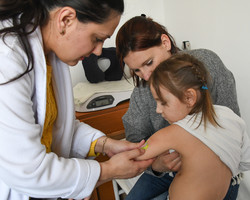Measles emergency in the European Region: WHO scales up response

UNICEF
From 1 January 2018 to 30 May 2019, 49 of the 53 countries in the Region together reported over 160 000 measles cases and over 100 measles-related deaths. WHO has been supporting them over time to improve their immunization coverage and tackle disease spread. However, the dramatic increase compared to previous years has been a wake-up call that the disease is serious, highly infectious and a persistent health risk for any susceptible child or adult, no matter where they live.
The resurgence of measles in the Region occurred because of a build-up over time of susceptible individuals in communities and countries with suboptimal immunization coverage. The consequences of these gaps in coverage have placed a heavy and at times tragic burden on individuals, families, communities and health systems. As measles continues to circulate across countries, more needs to be done.
Key data
Measles in Europe
| 2015 | 2018 |
| 5 000+ cases | 82 000+ cases |
WHO action
On 6 May 2019, WHO activated an internal Grade 2 emergency response to measles circulation in the European Region, scaling up its response through an operational platform to accelerate support to affected countries. The decision followed an assessment of the measles situation in the Region based on the growing number of children and adults affected by and dying from the disease, and the persistence of pockets of non-immunized or under-immunized individuals in many countries fuelling the continuing spread of measles.
WHO’s grading process for emergencies is an internal procedure laid out in the Emergency Response Framework (ERF) that informs the Organization of the extent, complexity and potential duration of the required response. It raises the profile of the emergency within WHO as well as in Member States, and allows WHO to mobilize the needed technical, financial and human resources in support of the affected countries.
WHO/Europe continues to work with all countries in the Region to respond to measles outbreaks and enhance immunization and disease surveillance systems. This is in line with the strategies to eliminate both measles and rubella outlined in the European Vaccine Action Plan 2015–2020, which was endorsed by all 53 Member States.



